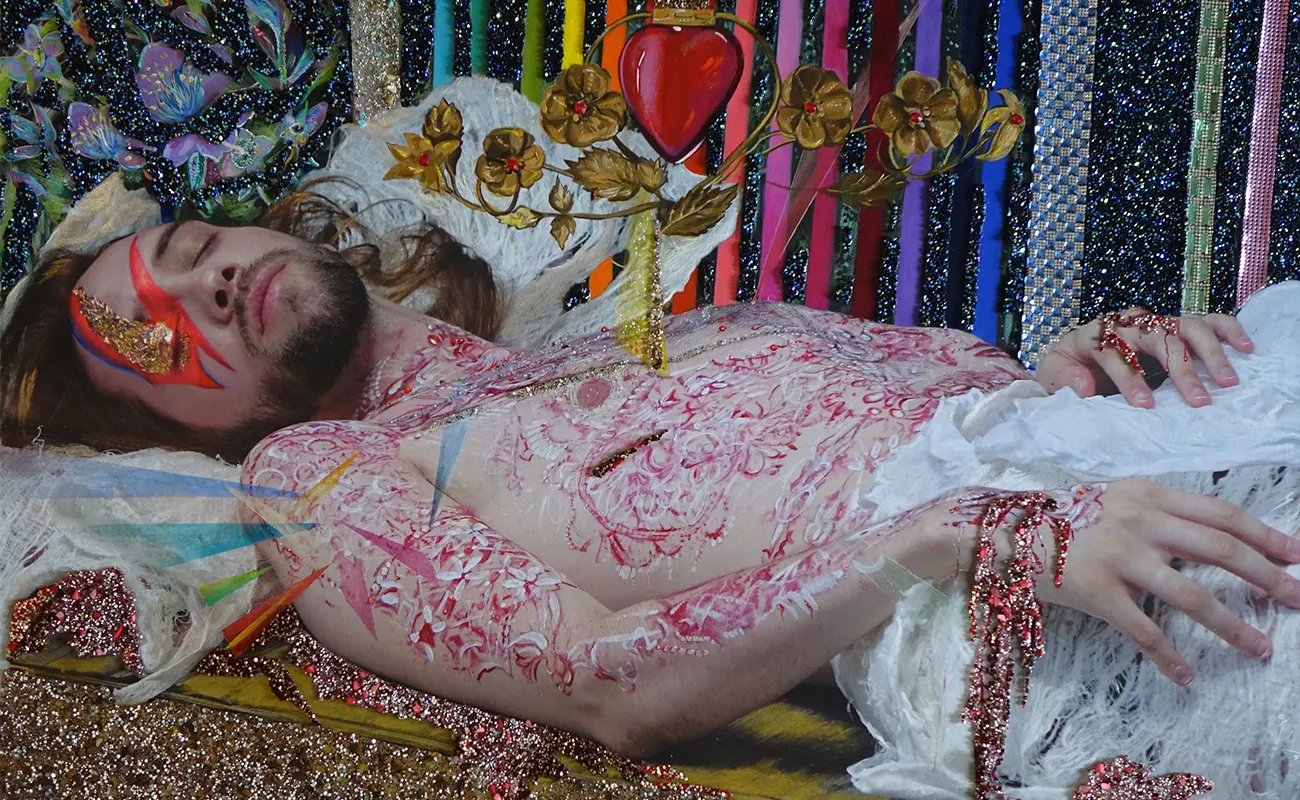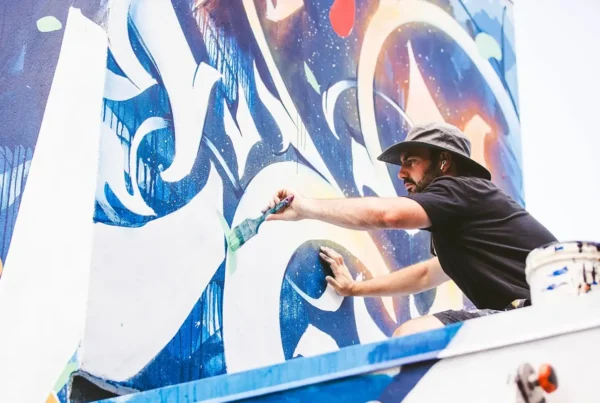“Art is nature manifest in us. As an artist, you follow your love of life.”
Rouge Lefebvre: A Ballet Beginnings
Rouge Lefebvre‘s artistic journey commenced in the graceful world of ballet, a passion ignited during her early years at Les Ballets d’Argenteuil. This prestigious institution, an offshoot of schools founded by the renowned Latvian dancer, Mme Ludmilla Chiriaeff of the Bolshoï Ballet, played a pivotal role in shaping Rouge’s early artistic sensibilities. Her encounter with Mme Chiriaeff, alongside the profound influence of witnessing Margot Fonteyn and Rudolph Nureyev’s performance in “Swan Lake” on television, deepened her aspiration to become a ballerina. In this environment, Rouge discovered a unique way of interpreting music and movement, her impaired hearing at the time transforming into an unexpected boon. It opened a realm where the dance became a form of romantic poetry in space, transcending the conventional auditory experience.
Tragically, Rouge’s dream of continuing ballet was abruptly halted when logistics became a barrier – the absence of transportation ending her ballet classes. This period, however, wasn’t devoid of artistic influence. Rouge’s mother, a model, introduced her to the world of high fashion during their weekend visits to luxury clothing fittings. Here, Rouge was exposed to the intricacies of textiles and aesthetics, her grandfather’s profession as a tailor adding a familial touch to her understanding of this craft. This exposure to the world of fashion and aesthetics laid the groundwork for Rouge’s later ventures into the realms of body art painting, paper sculpture, and concept photography, which would eventually define her artistic identity.

The Artist’s Diverse Inspirations and Mediums
Rouge Lefebvre’s artistic palette is as diverse as her background. After regaining her hearing, she embarked on a journey that would see her explore various mediums and themes. Enrolling at the Ontario College of Art and later delving into Cosmetology, Rouge’s exploration went beyond the classical art forms. Her early encounter with paper – a roll of paper pulp brought home by her father – sparked an interest in drawing, a skill she honed during school recesses. This exploration laid the foundation for her later work in paper sculpture, a medium where she could blend her understanding of textures, form, and color.
Rouge’s themes are profoundly influenced by nature and the organic world. She finds inspiration in the heart of a flower, botanic wonders, musical atmospheres, and the sacred aspects of religion. Her work, predominantly figurative and focusing on portraiture, resonates with the influences of Italian Renaissance masters like Leonardo da Vinci and Botticelli, as well as Dutch Baroque painters such as Vermeer. Additionally, she draws inspiration from the impressionist Vincent Van Gogh and a myriad of Neo-Classic and Post-Pop artists. This eclectic mix of influences is evident in her works, which carry an ethereal beauty and a timeless aura reminiscent of these legendary artists.
Rouge Lefebvre’s creative process is a meditative journey. In her workspace, she finds herself in a state of deep meditation, undisturbed and completely focused. This level of concentration, she believes, is cultivated over time and is essential to her artistic process. Her approach to creating art is intuitive, often emerging from dreams or spontaneous intuition. She doesn’t linger on past works, preferring to stay in the present and evolve organically from one piece to the next. Each work is unique, reflecting different frequencies and revealing new facets of her connection with the audience.
Her creations are not limited to a single medium. While she predominantly works with oils on canvas, she also ventures into photographic portraits. These portraits often feature models adorned in paper costumes and artistic makeup, with each piece telling a story and inviting the observer into a transformative ritual. This approach to art, where the observer is also observed, underlines her belief in art as a substantive, connective force – a medium to reveal inner beauty and quiet power.

Rouge Lefebvre: Choreographing Visual Narratives
Rouge Lefebvre’s artistic expression is akin to choreographing a cinema in her mind, where each artwork is a scene from a larger, more complex narrative. Her works often feature figurative madonnas, religious icons, and elements of pop culture mythology, blending ethereal and earthly themes in a harmonious dance. A striking example is her artwork “Bowie Christ,” which ingeniously fuses the iconic imagery of Christ with the pop star allure of David Bowie, symbolized through Bowie’s signature lightning bolt. This fusion of religious and pop culture references is emblematic of Rouge’s ability to create a universal language through her art, one that resonates with contemporary life while digging into deeper, more timeless themes.
The models in Rouge’s artworks are not mere subjects; they are integral to her storytelling process. Through their presence, she builds narratives that touch upon our collective consciousness. Each model, adorned in Rouge’s distinctive paper costumes and artistic makeup, becomes a character in a larger story, contributing to a narrative that transcends the individual and speaks to universal experiences. This ability to transform models into storytellers is part of what makes Rouge’s work so compelling and unique. Her art is a ritual of transformation, where the observer is invited to engage in a dialogue that goes beyond the visual, tapping into emotional and spiritual realms.

The Essence of Rouge Lefebvre’s Artistry
Rouge Lefebvre’s philosophy on art and creativity is as profound as her artworks. To her, an artist is more than a creator of visual experiences; they are conveyors of truth, dialogue, and healing. This belief is evident in her approach to art, where she sees no predefined path but instead follows her love of life and the natural world. Art, for Rouge, is the manifestation of nature within us, a concept that deeply influences her creative process and the themes she explores.
This perspective is reflected in the way she approaches her work. She doesn’t just create art; she engages in a dialogue with her medium, whether it’s oil on canvas, paper sculptures, or photographic portraits. Her art is a means of expressing a felt truth, a way to communicate emotions and ideas that might otherwise remain unspoken. Through this process, she offers a form of healing, both for herself and for her audience. It’s this open-mindedness and willingness to explore the depths of human experience that make Rouge Lefebvre’s work so impactful and enduring. Her art transcends the boundaries of traditional art forms, making a profound statement about the power of creativity and the role of the artist in society.






